Birdfinding.info ⇒ Common on its arctic breeding grounds, where it can be seen in a few accessible sites, such as Barrow, Alaska, in June and July. Otherwise primarily pelagic and infrequently seen near land. In peak migration periods—mostly in May and from August into October—it can be seen on offshore trips along the West Coast of the U.S. In September and October, it can sometimes be found on offshore trips along the East Coast south to Cape Hatteras, and a few scattered migrants (mostly juveniles) appear on lakes and reservoirs throughout western and central North America east to the Great Lakes and St. Lawrence River.
Sabine’s Gull
Xema sabini
Breeds on arctic tundra. Winters at sea in the southeastern Pacific and southeastern Atlantic Oceans.
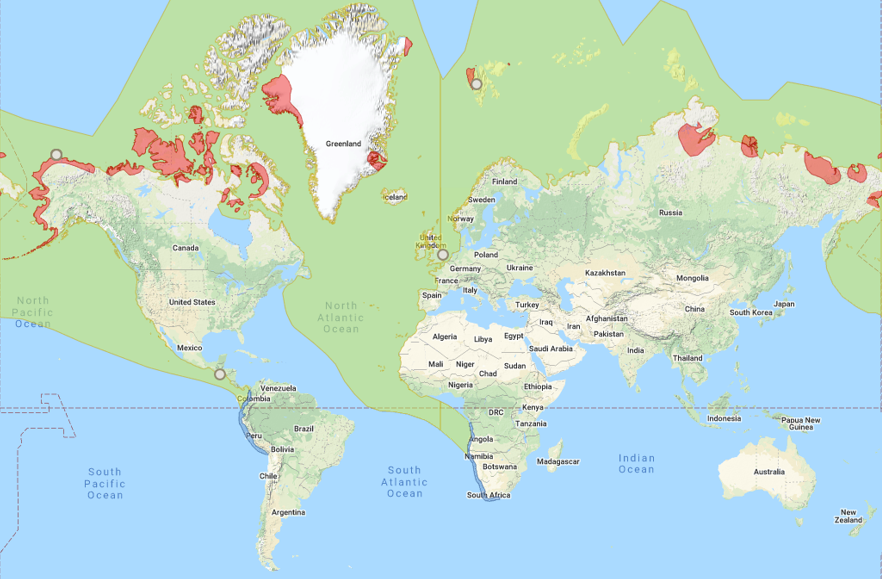
Approximate distribution of Sabine’s Gull. © Xeno-Canto 2020
Breeding. Breeds from June to August on marshy arctic tundra, mainly coastal, in Siberia, Alaska, Canada, Greenland, and Svalbard. Often in loose colonies, but also in scattered, solitary pairs.
The bulk of the population apparently breeds in the Canadian Archipelago, scattered nearly throughout, on most of the major islands and adjacent islets, including: Banks, Victoria, Prince of Wales, Bathurst, Cornwallis, Axel Heiberg, Ellesmere, Baffin, Bylot, Prince Charles, Southampton, and Coats Islands, among others. Also on the mainland of the Northwest Territories from the Tuktoyaktuk Peninsula east through the Boothia Peninsula and south to the northern shores of Hudson Bay.
In Siberia, along coasts of the Kara, Laptev, and East Siberian Seas, from the Taimyr Peninsula east to the Chukotsk Peninsula, mainly around the central and eastern river deltas, and on Wrangell and the New Siberian Islands.
In Alaska, from the Alaska Peninsula north along Bering Sea coasts, including the Yukon-Kuskokwim Delta and Seward Peninsula, and east along the North Slope.

Sabine’s Gull, breeding adult. (Barrow, Alaska; June 16, 2019.) © Daniel Lopez Velasco
Nonbreeding. Most of the world’s population winters in large flocks in offshore waters but within a few miles off the Pacific Coast of South America, mainly Peru around upwellings of the Humboldt Current. Stragglers winter north to southern Mexico and south to central Chile.
Much smaller numbers winter in the South Atlantic in offshore waters within a few miles of the west coast of Africa, mainly Namibia and South Africa, around upwellings of the Benguelas Current.
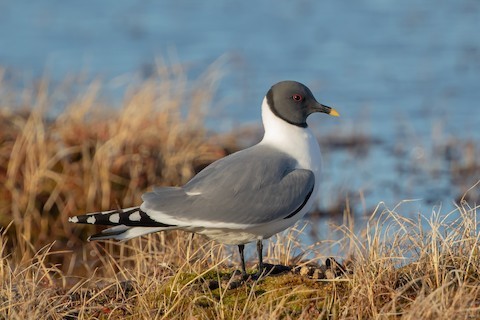
Sabine’s Gull, adult on coastal tundra breeding grounds. (Barrow, Alaska; June 21, 2018.) © Cory Gregory

Sabine’s Gull, flock of nonbreeding adults showing a pinkish flush on their bodies—likely due to their diet on the wintering ground. (Offshore from Lima, Peru; October 25, 2009.) © Lars Petersson
The Atlantic wintering population has been estimated at approximately 10,000, or about 2% of the global estimate: 330,000-700,000.
Movements. Northbound migrants begin leaving wintering grounds in March arrive on their breeding grounds in early June.
Most of the Pacific population apparently travels north in the near-offshore waters of western North America to the Gulf of Alaska, then heads west to the Bering Sea, then north through the Bering Strait into the Chukchi Sea, then east or west to the various Siberian and Canadian nesting areas.
The Atlantic wintering population apparently follows the African and western European coasts, then crosses to Greenland and Svalbard.

Sabine’s Gull, juveniles like this one often turn up in September on lakes in the interior of the continent. (Aurora Reservoir, Aurora, Colorado; September 26, 2020.) © Cathy Sheeter
After breeding, adults return south along the same routes from August to September, arriving from October into November. A small fraction of the Atlantic population moves south along the East Coast of North America, then head east or southeast to Africa.
Most juveniles migrate separately along the same routes a few weeks later, joining the adults somewhere in the tropics. Small but significant numbers of juveniles migrate directly across North America and appear on lakes throughout the continent in September. The majority of these birds apparently head to the Pacific or Atlantic before reaching the Gulf of Mexico, as there are very few records from the Caribbean region.
Vagrants have occurred nearly worldwide, especially from September into November, when the juveniles are mobile. There are scattered records from the Caribbean, the Mediterranean, Persian Gulf coasts, Oman, India, Japan, Korea, Taiwan, and Australia (several).
Identification
A small, elegant, dark-hooded, pelagic gull with a forked tail and a distinctive, flashy, tricolored, geometric pattern on its wings and back.
The pattern consists of a black wedge on the primaries, a gray triangle across the coverts and back, and a thin white triangle on the trailing edge of each wing.
Adults have a yellow-tipped black bill, and the forked tail is all-white.
Breeding adults have a slaty-gray head framed by a black collar. Their legs are usually black, sometimes purplish.

Sabine’s Gull, breeding adult. (Cooking Lake, Edmonton, Alberta; September 7, 2018.) © Chris Rees

Sabine’s Gull, breeding adult. (Laguna Salina Grande, Lagunas de Villafáfila Nature Reserve, Castilla y León, Spain; September 11, 2019.) © Manuel Segura Herrero

Sabine’s Gull, breeding adult. (Barrow, Alaska; June 16, 2019.) © Daniel Lopez Velasco
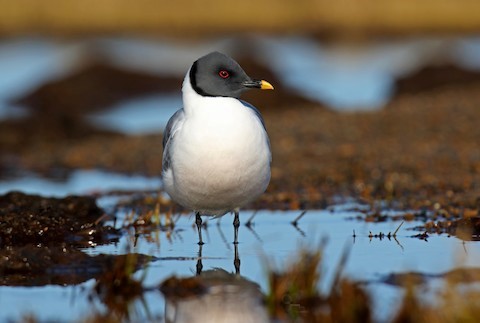
Sabine’s Gull, breeding adult, showing vivid red orbital skin. (Barrow, Alaska; June 16, 2019.) © Daniel Lopez Velasco

Sabine’s Gull, breeding adult. (Cambridge Bay, Victoria Island, Nunavut; June 29, 2013.) © Rick Whitman
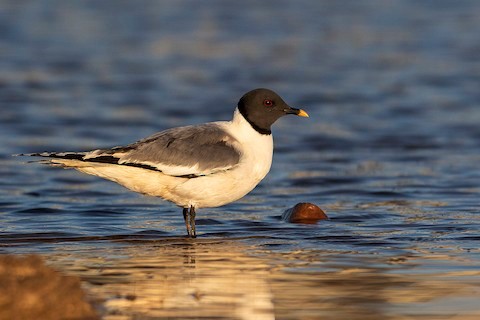
Sabine’s Gull, breeding adult. (Sherwood Park, Edmonton, Alberta; May 24, 2020.) © Gerald Romanchuk

Sabine’s Gull, breeding adult, showing distinctive upperparts pattern and all-white forked tail. (Isles of Scilly, England; August 23, 2020.) © Scott Reid

Sabine’s Gull, breeding adult. (Offshore from Tofino, British Columbia; September 3, 2017.) © John Reynolds
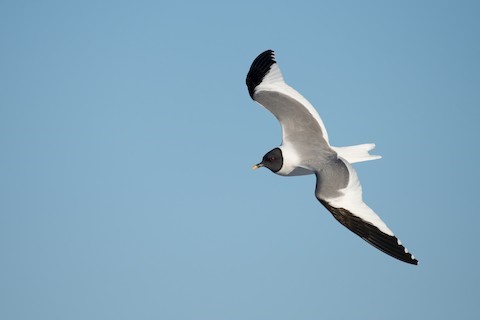
Sabine’s Gull, breeding adult. (Barrow, Alaska; June 14, 2019.) © Tyler Ficker
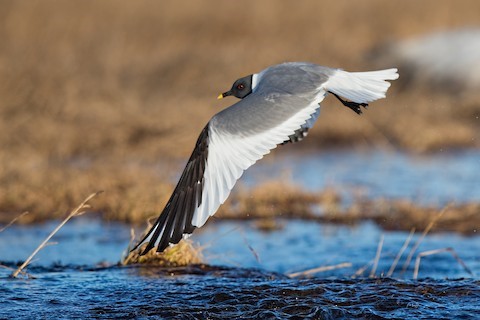
Sabine’s Gull, breeding adult, showing distinctive tricolored upperwing pattern. (Barrow, Alaska; June 15, 2017.) © Eric Gofreed

Sabine’s Gull, breeding adult, showing mostly white underwings. (Laguna Salina Grande, Lagunas de Villafáfila Nature Reserve, Castilla y León, Spain; September 11, 2019.) © Manuel Segura Herrero
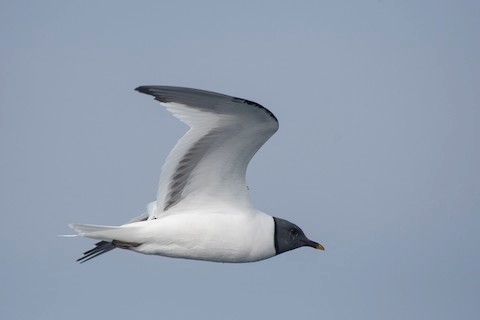
Sabine’s Gull, breeding adult, showing mostly white underwings. (Offshore from Westport, Washington; September 4, 2018.) © Bryan Calk

Sabine’s Gull, breeding adult, showing distinctive upperparts pattern and all-white tail—fanned, which conceals its fork. (Offshore from Newport, Oregon; August 24, 2019.) © Andy Frank
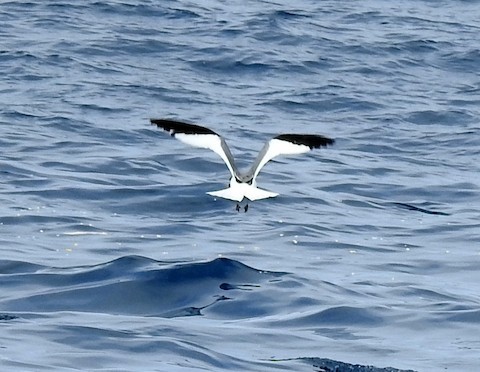
Sabine’s Gull, breeding adult, showing only its upperparts pattern, as seen at a distance. (Offshore from Newport, Oregon; August 24, 2019.) © Andy Frank

Sabine’s Gull, breeding adult. (Laguna Salina Grande, Lagunas de Villafáfila Nature Reserve, Castilla y León, Spain; September 16, 2019.) © Juan José González

Sabine’s Gull, breeding adult, showing vivid red orbital skin. (Barrow, Alaska; June 19, 2018.) © Dubi Shapiro

Sabine’s Gull, showing its rosy-pink oral cavity. (Deadhorse, Alaska; June 23, 2018.) © Nick Athanas
Nonbreeding Plumage. Nonbreeding adults have a partial hood, darkest on the nape and collar—sometimes limited to a thin collar on the nape. Their legs are pink.
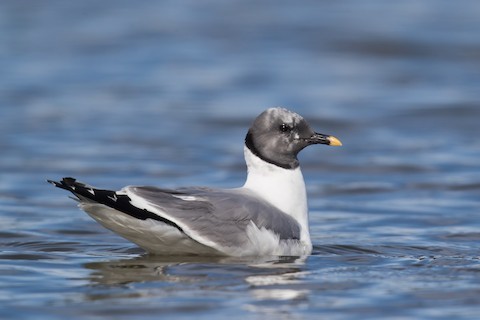
Sabine’s Gull, adult molting out of breeding plumage. (Eagle Creek Park, Indianapolis, Indiana; October 12, 2018.) © Ryan Sanderson
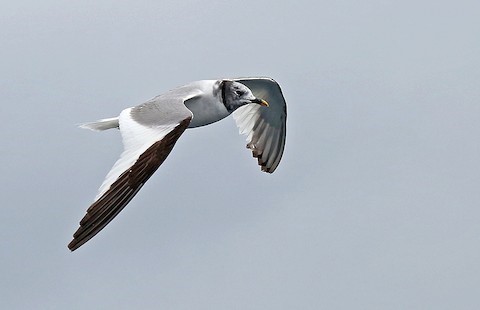
Sabine’s Gull, adult with partial hood, molting out of breeding plumage. (Punta Galera, Esmeraldas, Ecuador; October 18, 2016.) © Roger Ahlman

Sabine’s Gull, nonbreeding adult, showing thin black nape collar. (Offshore from Cape Town, South Africa; November 18, 2017.) © Niall D. Perrins

Sabine’s Gull, nonbreeding adult, showing thin black nape collar. (Offshore from Piñas, Darien, Panama; May 5, 2018.) © Jan Cubilla
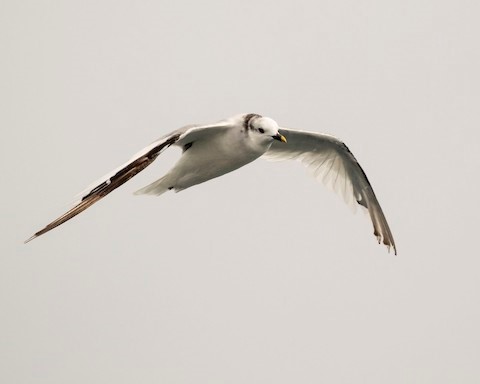
Sabine’s Gull, nonbreeding adult, showing thin black nape collar. (Offshore from Port Elizabeth, Eastern Cape, South Africa; January 22, 2020.) © Paul Farrell

Sabine’s Gull, adult with partial hood, molting out of breeding plumage. (Salinas, Santa Elena, Ecuador; September 20, 2014.) © Roger Ahlman
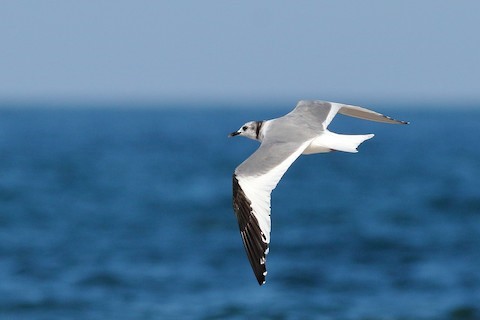
Sabine’s Gull, nonbreeding adult, showing thick black nape collar. (Race Point Beach, Provincetown, Massachusetts; July 12, 2020.) © Sean Williams

Sabine’s Gull, nonbreeding adult, showing thin black nape collar. (Offshore from Cape Town, South Africa; November 18, 2017.) © Niall D. Perrins
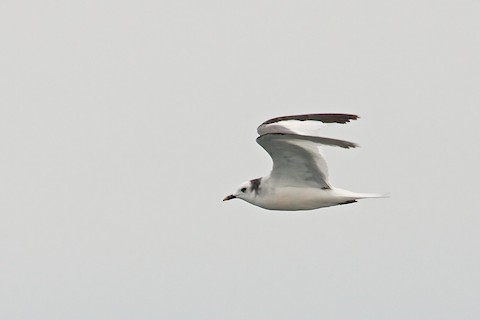
Sabine’s Gull, nonbreeding adult, showing thick black nape collar. (Offshore from Lima, Peru; December 7, 2012.) © Michael Andersen

Sabine’s Gull, nonbreeding adult, showing thin black nape collar. (Offshore from Cape Town, South Africa; November 26, 2009.) © Matt Brady

Sabine’s Gull, nonbreeding adult, showing smudgy nape collar. (Offshore from Dakar, Senegal; October 19, 2016.) © Chris Wood

Sabine’s Gull, nonbreeding adult. (Race Point Beach, Provincetown, Massachusetts; August 20, 2020.) © Ted Bradford
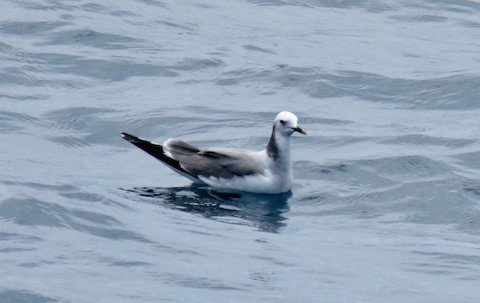
Sabine’s Gull, nonbreeding adult. (Offshore from Cape Town, South Africa; November 25, 2018.) © Mich Coker
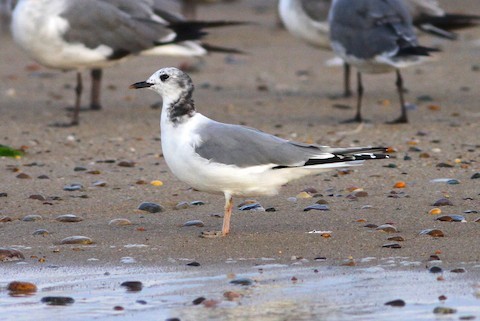
Sabine’s Gull, nonbreeding adult, showing partial hood or cowl and pink legs. (Race Point Beach, Provincetown, Massachusetts; July 13, 2020.) © Dan Burton
Immature Plumages. Juveniles resemble adults but lack the dark hood and have a black terminal band on the tail.
The juveniles’ upperparts are mostly brownish-gray (or grayish-brown) with a scaled texture that fades and evens out during the fall. At rest, they generally resemble juveniles of other small gull species—but in flight their wing pattern is distinctive.
First-winter birds turn from brownish to plain-gray on the upperparts.

Sabine’s Gull, juvenile. (Lake Ontario, Hamilton, Ontario; September 25, 2011.) © Brandon Holden

Sabine’s Gull, juvenile, showing brownish-gray upperparts, and black tailband. (Lac Léman, Vaud, Switzerland; September 26, 2017.) © Raphaël Nussbaumer

Sabine’s Gull, juvenile. (Salinas, Santa Elena, Ecuador; September 20, 2014.) © Roger Ahlman
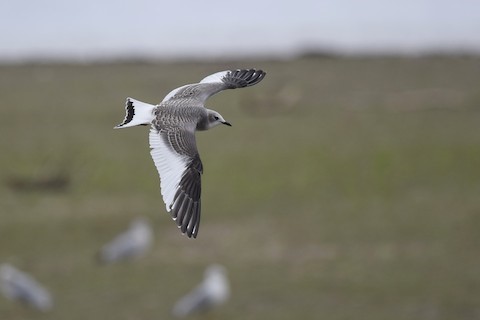
Sabine’s Gull, juvenile. (Riverlands Migratory Bird Sanctuary, Alton, Missouri; October 3, 2016.) © Andy Reago & Chrissy McClarren

Sabine’s Gull, juvenile. (Riverlands Migratory Bird Sanctuary, Alton, Missouri; October 3, 2016.) © Andy Reago & Chrissy McClarren

Sabine’s Gull, juvenile. (Aurora Reservoir, Aurora, Colorado; September 26, 2020.) © Cathy Sheeter

Sabine’s Gull, juvenile. (Greenslide, British Columbia; September 26, 2020.) © Don Manson
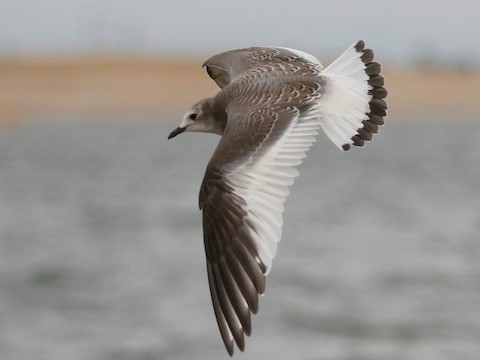
Sabine’s Gull, juvenile, showing brownish-gray, scaled upperparts and black tailband. (Aurora Reservoir, Aurora, Colorado; September 26, 2020.) © Cathy Sheeter
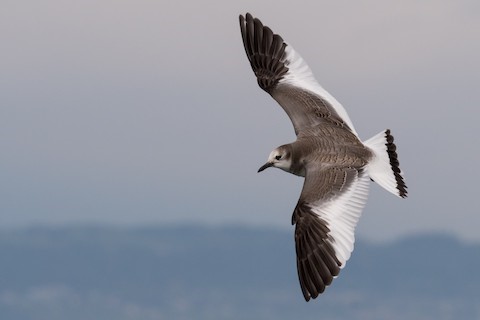
Sabine’s Gull, juvenile. (Lac Léman, Vaud, Switzerland; September 26, 2017.) © Raphaël Nussbaumer
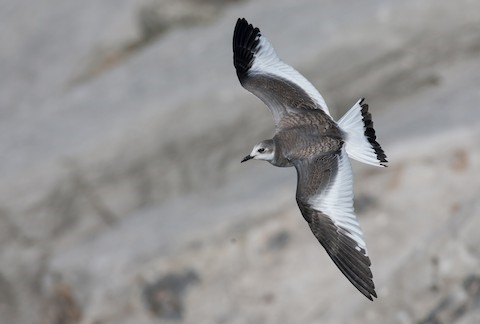
Sabine’s Gull, juvenile. (Broderick Park, Unity Island, Buffalo, New York; October 31, 2008.) © Brandon Holden

Sabine’s Gull, juvenile. (Broderick Park, Unity Island, Buffalo, New York; October 31, 2008.) © Brandon Holden

Sabine’s Gull, juvenile. (Riverlands Migratory Bird Sanctuary, Alton, Missouri; October 3, 2016.) © Andy Reago & Chrissy McClarren
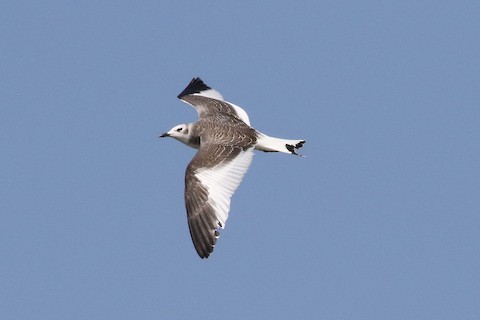
Sabine’s Gull, juvenile. (Chatfield State Park, Highlands Ranch, Colorado; September 11, 2017.) © Mark Chavez

Sabine’s Gull, juvenile. (Broderick Park, Unity Island, Buffalo, New York; October 31, 2008.) © Brandon Holden

Sabine’s Gull, juvenile. (Broderick Park, Unity Island, Buffalo, New York; October 31, 2008.) © Brandon Holden
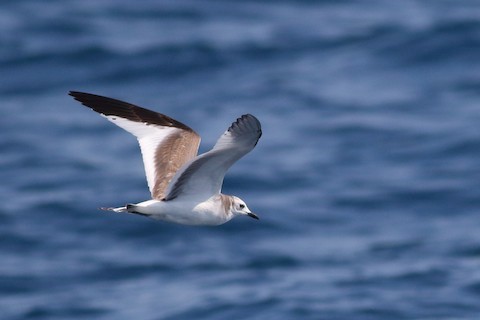
Sabine’s Gull, first-winter. (Offshore from Tumaco, Nariño, Colombia; January 8, 2020.) © Sean Williams

Sabine’s Gull, first-winter. (Offshore from Punta Galera, Esmeraldas, Ecuador; February 24, 2016.) © Roger Ahlman
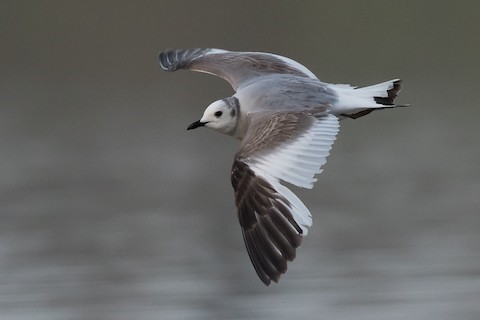
Sabine’s Gull, first-winter bird, showing brownish back molting to gray—also note black band on tail. (La Sologne, France; April 16, 2018.) © Frédéric Pelsy
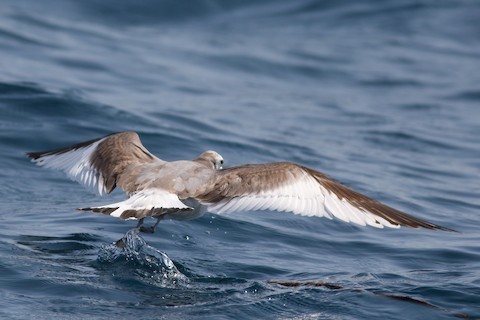
Sabine’s Gull, first-winter. (Offshore from Tumaco, Nariño, Colombia; January 8, 2020.) © Sean Williams

Sabine’s Gull, first-winter. (Offshore from Punta Galera, Esmeraldas, Ecuador; February 24, 2016.) © Roger Ahlman

Sabine’s Gull, first-winter. (Offshore from Tumaco, Nariño, Colombia; January 8, 2020.) © Sean Williams

Sabine’s Gull, juvenile. (Lake Pleasant, Arizona; September 18, 2020.) © Mary McSparen

Sabine’s Gull, juvenile. (Aurora Reservoir, Aurora, Colorado; September 26, 2020.) © Cathy Sheeter

Sabine’s Gull, juvenile. (Head Harbor Passage, New Brunswick; August 31, 2012.) © Chris Bartlett

Sabine’s Gull, juvenile. (Offshore from Tadoussac, Quebec; September 19, 2020.) © Simon Boivin
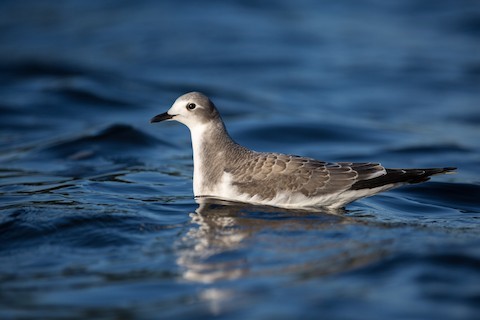
Sabine’s Gull, juvenile. (East Fork Lake, Olney, Illinois; September 6, 2019.) © Travis Mahan

Sabine’s Gull, juvenile with prey. (Broderick Park, Unity Island, Buffalo, New York; October 31, 2008.) © Brandon Holden

Sabine’s Gull, juvenile. (Vaudreuil-Dorion, Quebec; November 5, 2019.) © Michel Bourque
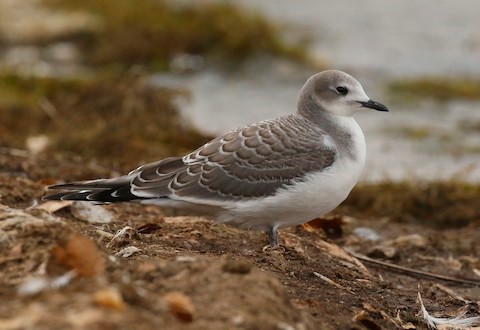
Sabine’s Gull, juvenile. (Aurora Reservoir, Aurora, Colorado; September 26, 2020.) © Cathy Sheeter

Sabine’s Gull, juvenile showing mostly gray upperparts. (Race Point Beach, Provincetown, Massachusetts; August 19, 2017.) © Peter Flood

Sabine’s Gull, juvenile. (Lee Creek, Salt Lake City, Utah; September 7, 2017.) © Matthew Pendleton
Cf. Swallow-tailed Gull. Sabine’s and Swallow-tailed Gulls occur together throughout Swallow-tailed’s range: off the Pacific coast of South America. Both are largely pelagic and their plumage patterns are very similar overall. At close range, each is distinctive, but at a distance in marine conditions they can be mistaken for one another. Swallow-tailed has significantly more white on the wing—as it occupies more than half of the surface area and extends forward to the leading edge. On Sabine’s the white area of the wing occupies much less than half the of the surface area and does not extend forward to the leading edge.
Cf. Immature Black-legged Kittiwake. Immature Black-legged Kittiwake has a wide white triangle on the trailing edge of its upperwing, much like the white triangle on Sabine’s Gull’s upperwing. Unlike Sabine’s, the kittiwake plumages that have this triangle also have a bold black bar across the coverts.
Cf. Immature Red-legged Kittiwake. Immature Red-legged Kittiwake has a wide white triangle on the trailing edge of its upperwing, much like the white triangle on Sabine’s Gull’s upperwing. The kittiwake plumages that have this triangle have much less black on their primaries than all plumages of Sabine’s have.
Cf. Immature Ross’s Gull. Immature Ross’s Gull has a wide white triangle on the trailing edge of its upperwing, much like the white triangle on Sabine’s Gull’s upperwing. Unlike Sabine’s, the Ross’s plumages that have this triangle also have a bold black bar across the coverts (more like an immature Black-legged Kittiwake).
Notes
Polytypic species consisting of four recognized subspecies.
References
Alderfer, J., and J.L. Dunn. 2014. National Geographic Complete Birds of North America (Second Edition). National Geographic Society, Washington, D.C.
BirdLife International. 2018. Xema sabini. The IUCN Red List of Threatened Species 2018: e.T22694479A132555511. https://dx.doi.org/10.2305/IUCN.UK.2018-2.RLTS.T22694479A132555511.en. (Accessed October 12, 2020.)
Brazil, M. 2009. Birds of East Asia. Princeton University Press.
de la Peña, M.R., and M. Rumboll. 1998. Birds of Southern South America and Antarctica. Princeton University Press.
eBird. 2020. eBird: An online database of bird distribution and abundance. Cornell Lab of Ornithology, Ithaca, N.Y. http://www.ebird.org. (Accessed October 12, 2020.)
Garcia-del-Rey, E. 2011. Field Guide to the Birds of Macaronesia: Azores, Madeira, Canary Islands, Cape Verde. Lynx Editions, Barcelona.
Garcia-del-Rey, E. 2018. Birds of the Canary Islands. Christopher Helm, London.
Harrison, P. 1983. Seabirds: An Identification Guide. Houghton Mifflin, Boston.
Howell, S.N.G., and J.L. Dunn. 2007. Gulls of the Americas. Houghton Mifflin, Boston.
Howell, S.N.G., and S. Webb. 1995. A Guide to the Birds of Mexico and Northern Central America. Oxford University Press.
Howell, S.N.G., and K. Zufelt. 2019. Oceanic Birds of the World. Princeton University Press.
Jaramillo, A. 2003. Birds of Chile. Princeton University Press.
Johnson, S.R., and D.R. Herter. 1989. The Birds of the Beaufort Sea. BP Exploration (Alaska) Inc., Anchorage, Alaska.
Kirwan, G.M., A. Levesque, M. Oberle, and C.J. Sharpe. 2019. Birds of the West Indies. Lynx Edicions, Barcelona.
Mullarney, K., L. Svensson, D. Zetterström, and P.J. Grant. 1999. Birds of Europe. Princeton University Press.
Ridgely, R.S., and P.J. Greenfield. 2001. The Birds of Ecuador, Volume II: Field Guide. Cornell University Press.
Ridgely, R.S., and J.A. Gwynne. 1989. A Guide to the Birds of Panama (Second Edition). Princeton University Press.
Schulenberg, T.S., D.F. Stotz, D.F. Lane, J.P. O’Neill, and T.A. Parker. 2007. Birds of Peru. Princeton University Press.
Sibley, D.A. 2000. The Sibley Guide to Birds. Alfred A. Knopf. New York.
Sinclair, I., P. Hockey, W. Tarboton, and P. Ryan. 2011. Birds of Southern Africa (Fourth Edition). Random House Struik (Pty) Ltd. Cape Town, South Africa.
van Perlo, B. 1999. Birds of Southern Africa. Princeton University Press.
van Perlo, B. 2002. Birds of Western and Central Africa. Princeton University Press.
Xeno-Canto. 2020. Sabine’s Gull – Xema sabini. https://www.xeno-canto.org/species/Xema-sabini. (Accessed October 12, 2020.)

